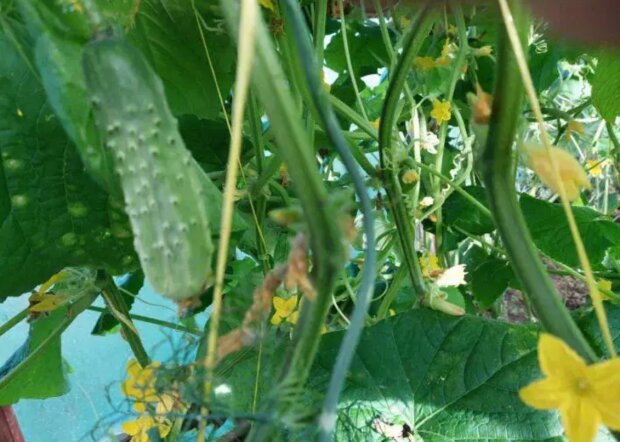The idea is to water cucumbers with cold water (around +10...+12°C) strictly after sunset.

This method induces stress in the plants, prompting the roots to seek nutrients more actively and strengthen their structure. A study conducted in 1987 showed that such watering can increase yields by 200-250%, especially in varieties with a robust root system.
One farmer who tried this method shares his experience: before experimenting with cold water, he harvested 5-7 kg from a single plant, but afterward, he collected 15 kg! The fruits remained uniform and did not taste bitter.
However, like any method, there are several nuances. Cold water is effective only when the temperature exceeds +25°C and soil moisture is at least 60%. If nighttime temperatures drop below +15°C, there is a risk of the roots becoming chilled and rotting.
 0
0 Experts, including agronomists, recommend combining this method with ash fertilization. This enhances the results by neutralizing the stress from temperature fluctuations and adding potassium, which is essential for fruit set.
The scientific basis is that cold water stimulates the production of abscisic acid – a hormone that activates root hairs, helping the plant absorb micronutrients like silicon and boron, which are crucial for fruit density and disease resistance.
However, this method is suitable only for mature plants that have at least 3-4 true leaves. Young seedlings can perish even from brief chilling.
 1
1 If you want to try this method, here are some recommendations:
- Temperature control: Use a water thermometer to ensure the water is within +10-12°C. If the water is too cold, you can mix in some warm water.
- Watering time: Water only after the sun has completely set to avoid evaporation and soil cooling.
- Watering frequency: It is best to water no more than twice a week during the active fruiting period.
- Suitable varieties: Older varieties like "Muromsky" or "Vyaznikovsky," and hybrids labeled "F1 cold-resistant," respond best to this method.
 2
2 Nonetheless, it is important to be aware of the risks. In regions with cool nights, you might try a "gentler" version of the method – watering with water at around +15°C mixed with iodine, which will provide a similar stress effect but be safer for the roots.
Finally, it's crucial to remember that experimenting with this method should be done cautiously. One misstep could lead to dead plants instead of a bountiful harvest. Start with a few plants, record the results, and if the method proves successful, gradually scale up.